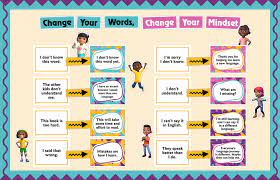Introduction
The shift to remote learning has been both a challenge and an opportunity for educators across the globe. This change is particularly crucial for English Language Learners (ELLs) and educators who must find innovative ways to support language acquisition and learning in a digital environment. To effectively support your ELL students, consider incorporating the following tips and strategies.
1. Provide clear instructions
Keep instructions simple, clear, and brief. Use step-by-step explanations with visuals, like flowcharts or diagrams, to eliminate confusion. It’s also helpful to check for understanding by asking students to paraphrase or repeat their understanding of the task.
2. Incorporate multimedia resources
Embrace the use of videos, audio recordings, and interactive presentations to bring content to life and engage your ELL students in multiple ways that cater to diverse learning preferences.
3. Encourage collaborative learning
Promote social interaction among students through breakout rooms, group chats, and forums. These activities not only foster a sense of community but can also help break down language barriers as students learn from one another.
4. Offer additional support materials
Ensure that ELLs have access to supplementary materials like vocabulary lists, examples of sentences in proper context, and grammar explanations. This extra support can go a long way in helping students grasp complex concepts during remote instruction.
5. Provide regular feedback
Provide constructive feedback frequently to help ELL students track their progress and address any concerns promptly. Also, maintain an open dialogue with them about course content and learning goals through video calls or online messaging systems.
6. Use scaffolding techniques
Break down tasks and activities into smaller, more manageable steps to make them easier for students—especially for those who are still mastering English proficiency. Scaffolding techniques will make content more accessible and foster gradual independence as learners acquire new skills.
7. Cater instruction to individual needs
Personalize learning by offering a variety of activities and assignments that cater to different proficiency levels and learning styles. Assign differentiated tasks to ensure that each student is adequately challenged and supported in their development.
Conclusion
Remote learning can be a challenging experience for many students, especially English Language Learners. As an educator in this unique situation, it is vital to adjust your teaching strategies to ensure your students succeed while learning remotely. By incorporating these tips into your teaching approach, you can better support ELLs’ language development process and foster ongoing engagement in the virtual classroom.






 One of the results of the CATAPULT Project (Computer-Assisted Training And Platforms to Upskill Language for Specific Purposes (LSP) Teachers) is
One of the results of the CATAPULT Project (Computer-Assisted Training And Platforms to Upskill Language for Specific Purposes (LSP) Teachers) is 